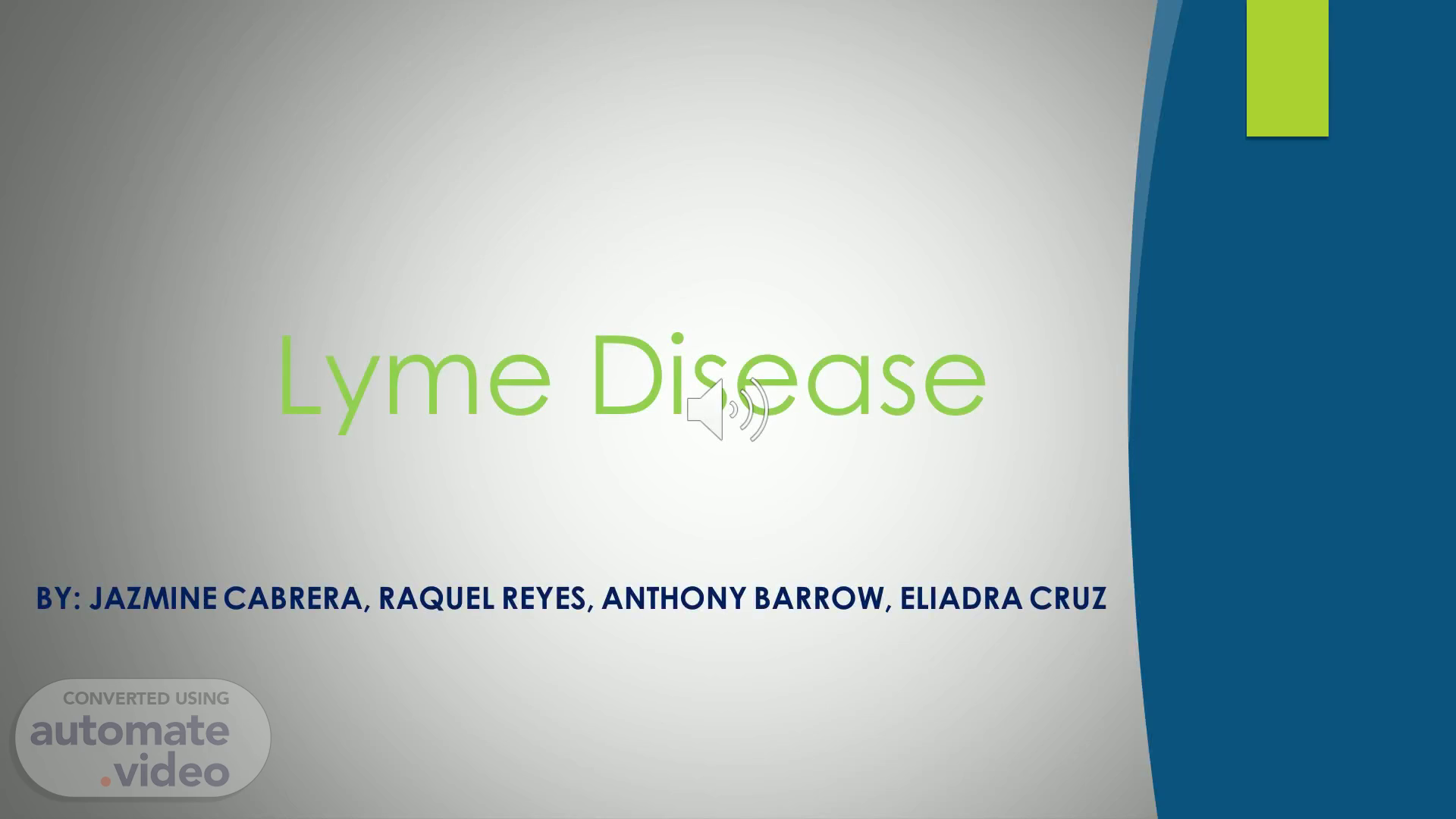Scene 1 (0s)
[Audio] BY: JAZMINE CABRERA, RAQUEL REYES, ANTHONY BARROW, ELIADRA CRUZ Lyme Disease 1.
Scene 2 (16s)
[Audio] Etiology of Lyme Disease Borreliosis, most commonly called Lyme Disease is a vector-borne disease caused by the bacterium Borrelia burgdorferi. It is transmitted to humans through tick bites, specifically those of black legged ticks. The ticks can attach to any part of the human body but are found in hard to see places such as the groin, armpit and scalp. In order for the transmission of Lyme Disease to occur, the tick must be attached between 36- 48 hrs. Humans tend to be infected through bites of immature ticks called nymph, sizing about less than 2mm and difficult to see. 2 Jazmine Cabrera.
Scene 3 (1m 4s)
[Audio] Signs & Symptoms 3 Early signs include (3- 30 days) a) Fever, chills, headache, fatigue, muscle and joint aches, and swollen lymph nodes may occur if the rash is not visible. b) Erythema Migrans may occur which can spread up to 12 In or more and may result in a " bullseye" appearance • Later signs include (days to months) a) Severe headache/ neck stiffness, facial palsy, heart palpitations ( Lyme carditis ), arthritis, nerve pain, and tingling and numbness of hands/ feet. Jazmine Cabrera.
Scene 4 (2m 7s)
[Audio] Risk Factors Where you live and your work are the primary factors that can be used to determine your risk for Lyme disease. The best way to prevent Lyme disease is to avoid areas where deer ticks live, especially wooded, bushy areas with long grass. ❑ Workers at risk of Lyme disease include, but are not limited to, those working in the following: Construction, landscaping, forestry, brush clearing, land surveying, farming, railroad work, oil field work, utility line work, park or wildlife management, other outdoor work. 4.
Scene 5 (2m 48s)
[Audio] Medical Treatment Your doctor will start you on antibiotics if your Lyme disease is discovered quickly after you become infected. Most patients who begin treatment at this point experience rapid improvement. If not, your doctor might need to recommend a different antibiotic regimen. Late-Stage Lyme Disease is treated with antibiotics via IV. 5 Raquel Reyes.
Scene 6 (3m 19s)
[Audio] Known Precautions Of Patients with Lyme Disease Symptoms or Disseminated PTLD REST Complimentary Medical Interventions Depression, Rage & Cognitive Difficulties Complex Tickborne ANTHONY BARROW.
Scene 7 (3m 52s)
[Audio] Protocols to follow while Treating Lyme Disease Patient BARROW Anthony Barrow.
Scene 8 (4m 10s)
[Audio] A week after coming home from a long hike, Michael has been experiencing an itchy sensation all over his body, a high fever, and a big headache. He goes to his doctor to explain and figure out what's been going on with him. Michael points out that a big rash is forming on his right calf and the doctor decides that he'll need to do some blood tests to check for Lyme disease. The tests that will be taken are ELISA and… A. CBC ( Complete Blood Count) B. RAST ( Radioallergosorbent) C. Western Blot D. Plasma Histamine Eliadra Cruz.
Scene 9 (4m 59s)
[Audio] Harold who cleans his garden every week has tested positive for Lyme disease. He carries the common symptoms such as a fever, a headache, and a bullseye rash on his left forearm. by not going to the doctor when he started detecting the symptoms earlier, he is starting to feel paralysis in his… A. Upper muscles B. Facial muscles C. Lower muscles D. Abdominal muscles Eliadra Cruz.
